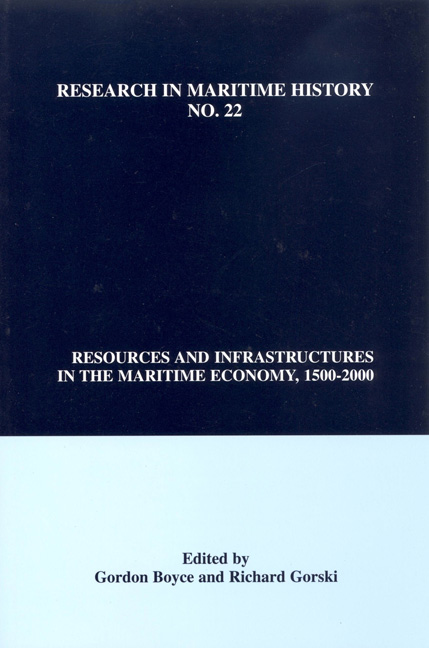Book contents
- Frontmatter
- Contents
- Contributors' Notes
- “Introduction: Resource Flows and Maritime Infrastructures”
- Part 1 Intangible Infrastructures and their Components
- Part 2 Resource Flows and Economic Development
- Part 3 Physical Infrastructures: Port Development and Planning
- “Economy, Traffic and Infrastructure in the Port of Genoa, 1861-1970”
“Economy, Traffic and Infrastructure in the Port of Genoa, 1861-1970”
from Part 3 - Physical Infrastructures: Port Development and Planning
- Frontmatter
- Contents
- Contributors' Notes
- “Introduction: Resource Flows and Maritime Infrastructures”
- Part 1 Intangible Infrastructures and their Components
- Part 2 Resource Flows and Economic Development
- Part 3 Physical Infrastructures: Port Development and Planning
- “Economy, Traffic and Infrastructure in the Port of Genoa, 1861-1970”
Summary
When the Kingdom of Italy was formed in March 1861, Rome was not yet the centre of government (it would become so only in 1870), but Genoa was already the maritime capital and, together with Marseilles, the most important port in the Mediterranean. In fact, at Unification Genoa handled about fifteen percent of the nation's shipping traffic and was the largest of more than 250 Italian ports; it was also the most modern since it was the only one with a railway link (since 1854). The Ligurian city's position as Italy's maritime capital was also confirmed by the pursuit of other important initiatives. In 1860, the Committee of Maritime Insurance Companies was constituted in Genoa, where thirty-six of the fifty-nine Italian marine insurance firms were located. In 1861 the Italian shipping classification register (Rina) was established, while the Superior School of Marine Engineering, intended to modernise the shipbuilding industry, and the Marine Hydrographie Institute were founded in 1870 and 1872, respectively. In addition, the headquarters of the most important and successful Italian shipping companies were located in the city. Still, the port could no longer satisfy the growing demand for maritime commercial services.
Between the second half of the 1870s, when a sharp change took place in national economic policy, and World War I, Italy began a process of industrialisation that by the 1960s would bridge the gap with the more industrialised nations, transforming it into one of Europe's richest and most dynamic economies. In the late nineteenth and early twentieth centuries Genoa, along with Milan and Turin, became one of the three Italian cities with the highest industrial density and the maritime terminal of the country's most economically-advanced area, the so-called “industrial triangle, “ which included Lombardy, Piedmont and Liguria. This region of about 55,000 square kilometres, one-fifth of Italy's total surface area, is very close to Genoa; in fact, Turin and Milan, the other two “points” of the triangle, are about 150 kilometres from Genoa, even though they could only be reached by crossing the Apennine mountain chain.
Thus, Italy is a typical case of a “late comer” and its industrialisation was based on very important interventions by the state (such as tariffs and giving preference to domestic producers) and a massive flow of imports, especially raw materials.
- Type
- Chapter
- Information
- Resources and Infrastructures in the Maritime Economy, 1500–2000 , pp. 119 - 140Publisher: Liverpool University PressPrint publication year: 2002



